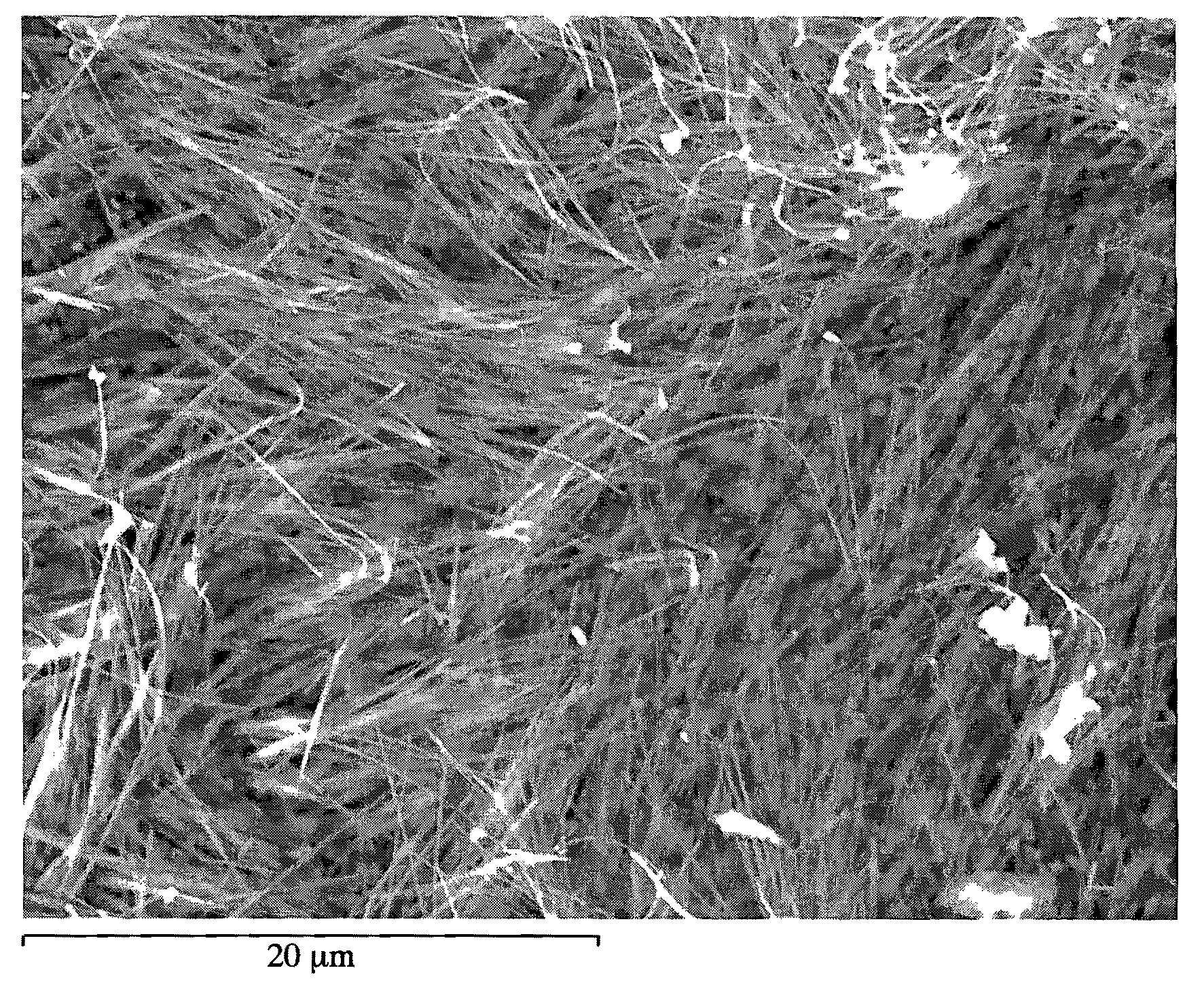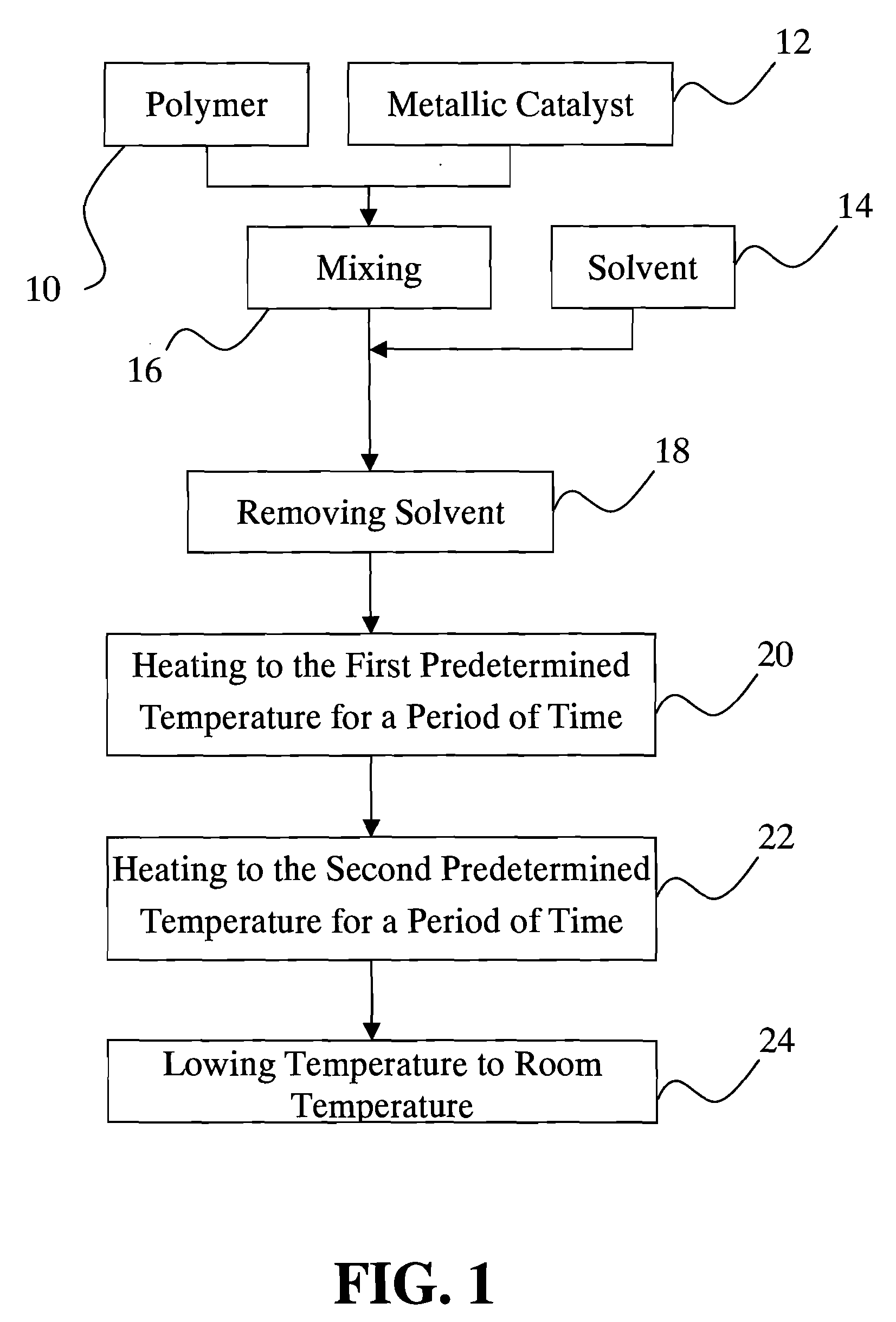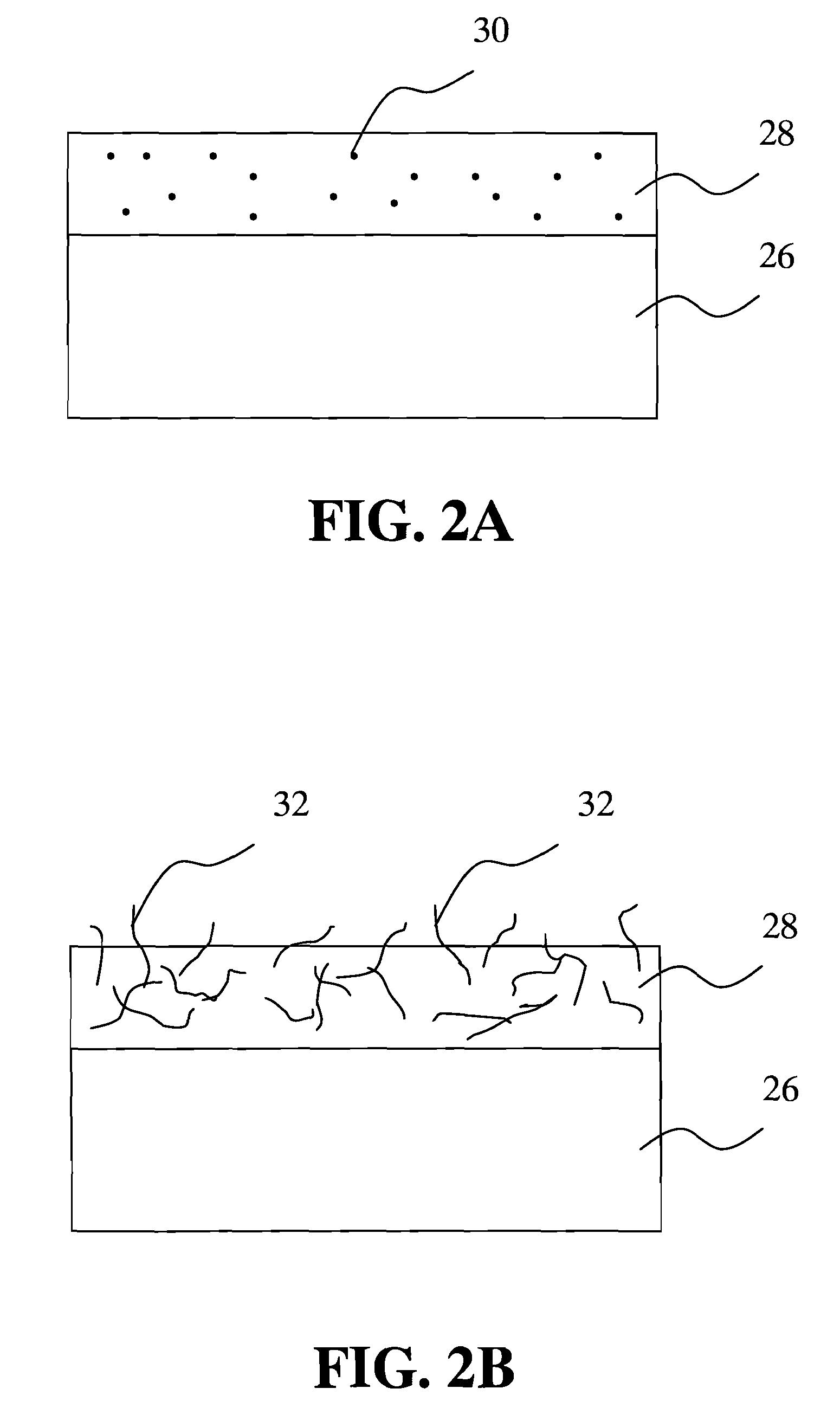Method for producing carbon nanotube
- Summary
- Abstract
- Description
- Claims
- Application Information
AI Technical Summary
Benefits of technology
Problems solved by technology
Method used
Image
Examples
example 1
[0024]FIG. 1 shows a flow chart of a preferred example in carbon nanotubes producing method according to the present invention. Procedures provided in the method include the following steps.
[0025]In a mixing step (16), polymer (10) and metallic catalyst (12) are mixed thoroughly with solvent (14) (for examples, organic solvent or water). After solvent removing step (18), mixture of polymer (10) and metallic catalyst (12) is obtained. Alternatively, a mixture of polymer and metallic catalyst is heated to a temperature above the melting point of the polymer to become liquid form, and the metallic catalyst is dispersed uniformly in the polymer, which is not shown in the figure.
[0026]The example of polymer (10) applied in the present invention may be polyethylene glycol (PEG), but is not limited to it.
[0027]The preferred metallic catalysts used in the present invention are metallic particles or metallic compounds. For example, the metallic particles may be iron, cobalt, or nickel; and t...
example 2
[0038]Polyethylene glycol is mixed with ferric sulfate, whose amount is 0.1-1% (w / w) based on the amount of polyethylene glycol. Later, a solvent (for example, organic solvent or water) is added to make the two components mixed uniformly. The solvent is removed later to have a uniform mixture of polymer and metallic catalyst.
[0039]The abovementioned polymer mixture is spread over an inert plate, such as plate of aluminum oxide, silicon wafer, and silicon dioxide, which is dried to a constant weight thereafter.
[0040]The base plate spread with polymer mixture is put into a high temperature stove heated to a predetermined temperature to perform thermal decomposition. First, the chamber is filled with air, and heated at a rate of 0.5-20° C. per min till the first predetermined temperature (about 200-400° C.) of the first stage, and stayed for 1 to 5 hours at the temperature. Before the first stage of heating, the inert gas (such as nitrogen (N2), helium (He), neon (Ne), or argon (Ar)) i...
PUM
| Property | Measurement | Unit |
|---|---|---|
| Temperature | aaaaa | aaaaa |
| Temperature | aaaaa | aaaaa |
| Temperature | aaaaa | aaaaa |
Abstract
Description
Claims
Application Information
 Login to View More
Login to View More - Generate Ideas
- Intellectual Property
- Life Sciences
- Materials
- Tech Scout
- Unparalleled Data Quality
- Higher Quality Content
- 60% Fewer Hallucinations
Browse by: Latest US Patents, China's latest patents, Technical Efficacy Thesaurus, Application Domain, Technology Topic, Popular Technical Reports.
© 2025 PatSnap. All rights reserved.Legal|Privacy policy|Modern Slavery Act Transparency Statement|Sitemap|About US| Contact US: help@patsnap.com



